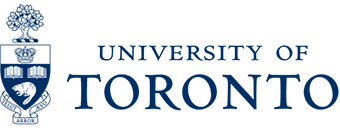Breast reconstruction, breast enhancement and breast reduction are commonly performed by faculty plastic surgeons in the Division of Plastic, Reconstructive & Aesthetic Surgery at the University of Toronto.
Central to the specialty of Plastic Surgery is the care of patients requiring both aesthetic and reconstructive breast surgery. Concepts and techniques used in both aesthetic and reconstructive surgery are applied when performing breast surgery to enhance or restore the appearance of the breasts.
Breast Reconstruction
Breast reconstruction is provided under the University of Toronto Breast Program which is a multi-centre initiative involving 4 academic teaching hospitals and 9 faculty plastic surgeons. These include:
Women’s College Hospital
- Dr. John Semple
- Dr. Mitch Brown
- Dr. Brett Beber
Michael Garron Hospital
- Dr. Brett Beber
North York General Hospital
- Dr. Ron Somogyi
St. Joseph’s Health Science Centre
- Dr. Kyle Wanzel
Sunnybrook Health Science Centre
- Dr. Joan Lipa
- Dr. Laura Snell
St. Michael’s Hospital
- Dr. Blake Murphy
- Dr. Melinda Musgrave
UHN – Toronto General Hospital and Princess Margaret Hospital
- Dr. Siba Haykal
- Dr. Stefan Hofer
- Dr. Toni Zhong
- Dr. Anne O’Neill
Breast reconstruction is available at all of these centres.
Reconstructive surgery of the breast is performed to restore the appearance of the breasts; this is most commonly required after breast cancer. Other reasons include trauma and congenital abnormalities of the breasts.
For patients dealing with breast cancer, breast reconstruction may be performed at the same time (Immediate Reconstruction) as surgery to remove of the affected breast tissue or breast reconstruction may be done at a later time (Delayed Reconstruction) after treatment for breast cancer has been completed. A wide range of techniques exist to reconstruct the breasts:
- Autologous techniques (using one’s own tissues) include pedicled and free flap breast reconstruction as well as fat grafting
- Alloplastic techniques (using an implant) involve using manufactured materials
- Combined techniques may use both one’s own tissues as well as manufactured materials
A plastic surgeon can help a patient decide what breast reconstruction options would be best suited in the particular circumstances of that patient.
Breast Reduction and Breast Enhancement
Breast enhancement and breast reduction surgery are performed by most faculty plastic surgeons in the Division of Plastic, Reconstructive & Aesthetic Surgery at the University of Toronto. These procedures are also available through the Division of Plastic, Reconstructive & Aesthetic Surgery Resident Aesthetic Clinic at the Plastic Surgery Clinic in Mississauga under supervision of Dr. Jamil Ahmad.
Aesthetic surgery of the breast is commonly performed to improve the appearance of the breasts. Underdevelopment of the breasts, age related changes, and hormonal changes including pubertal, postpartum or postmenopausal changes are common reasons why patients seek consultation with a plastic surgeon to improve their appearance. Common procedures performed to enhance the appearance of the breasts and chest include:
- Breast augmentation (enlargement)
- Breast lift (mastopexy)
- Breast augmentation with mastopexy
- Male breast surgery (gynecomastia surgery)
Breast reduction is performed to address symptoms of large breasts including neck, back, shoulder and breast discomfort.
Patient Advocacy and Social Awareness
The Division of Plastic, Reconstructive & Aesthetic Surgery at the University of Toronto places an important focus on patient advocacy and social awareness for breast health related issues. Members from the Division of Plastic, Reconstructive & Aesthetic Surgery are active participants in events such as Run for the Cure and BRA Day.
Breast Health-Related Research and Education
Breast health-related research is an important focus of faculty members in the Division of Plastic, Reconstructive & Aesthetic Surgery at the University of Toronto. From the development of sophisticated apps to monitor out-patient care to the delivery and availability of breast reconstruction at a provincial level, faculty members are involved in research to enhance and improve the delivery of breast care for patients.
The Division of Plastic, Reconstructive & Aesthetic Surgery at the University of Toronto is committed to excellence in plastic surgery education which involves teaching reconstructive and aesthetic surgery of the breasts to medical students, residents and fellows – the plastic surgeons of the future. At any one time, there are more than 15 residents in the plastic surgery residency training program. Additionally, fellowships in breast reconstruction are available at Toronto General Hospital, Women’s College Hospital, and Sunnybrook Health Science Centre.
Additionally, the Division of Plastic, Reconstructive & Aesthetic Surgery at the University of Toronto hosts the annual Breast and Aesthetic Plastic Surgery Symposia. More commonly referred to as the Toronto Breast Meeting and the Toronto Aesthetic Meeting, each year attendee plastic surgeons and allied health professionals from Canada and around the world attend these educational symposia to learn the latest techniques and research in aesthetic and reconstructive surgery of the breasts.


